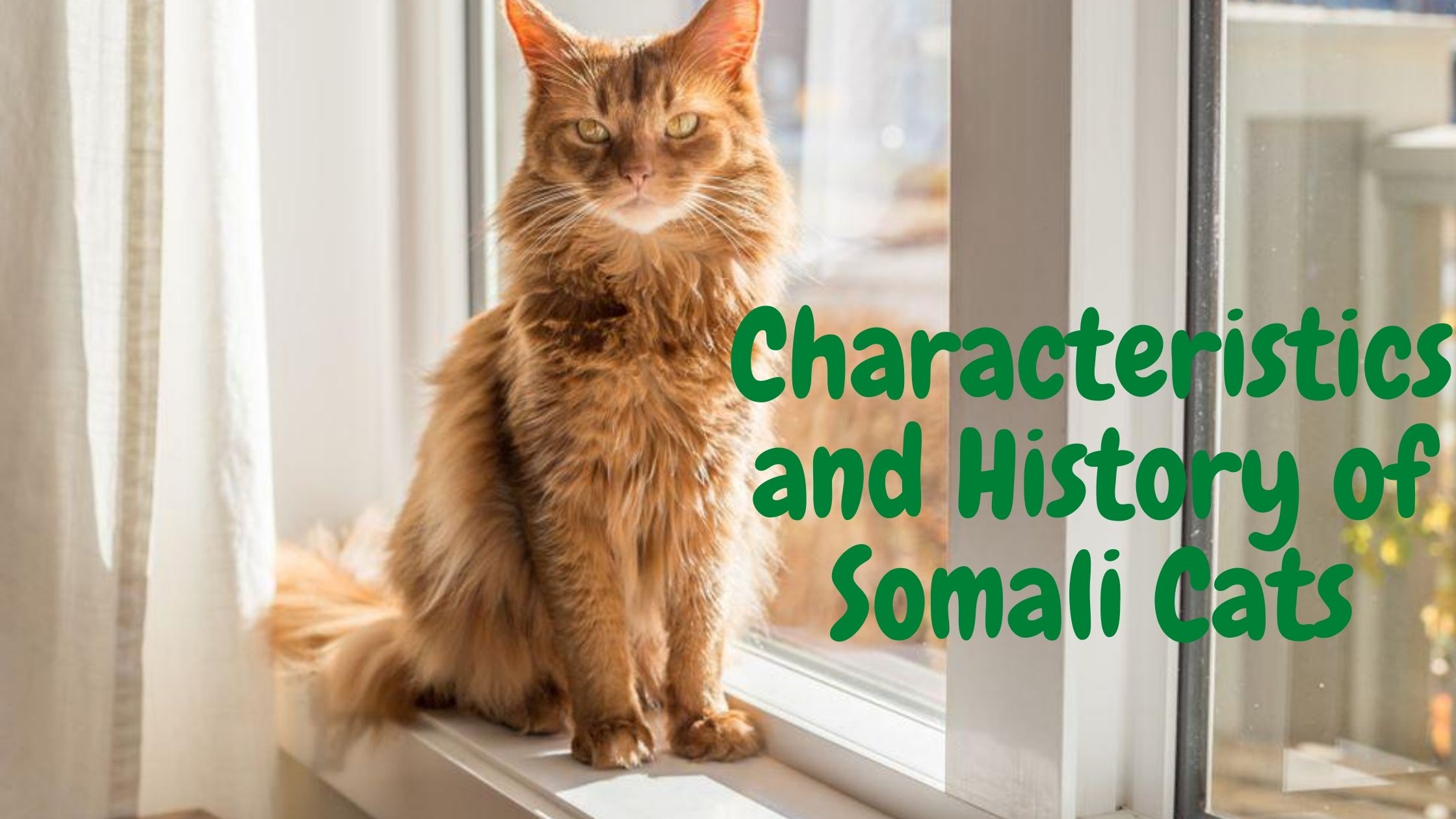Somali Cats are called so according to the name of a region named “Somali” which is close to Abyssinia. From the year of 1920s until the 1930s, from a breeding program, this cat breed with semi-long hair appeared spontaneously. Some Abyssinian kittens had a tail with thick fur, fluffy like a brush, and long hair that covers their entire body.
The Long-hair gene is recessive (lost/covered) compared with the short-hair gene. At first, the long-haired cats were not recognized. Many breeders of Abyssinian did not want to admit some kittens they produce, which were long-haired, because they showed genetic impurity of their Aby cats.
Read about the Siamese Breed Here
To improve the stability of the genetic type of Aby cat, long-haired Aby cats were excluded from breeding programs and hidden. Then, in around 1960, some breeders in the United States developed this long-haired Aby and registered them as a separate cat breed called Somali cats.
Starting in 1978, Somali cats have been considered as one cat breed with stable genetic traits and have a distinct class in the cat contests held by the Cat Fanciers Association (CFA). In 1991, the Great Britain Cat Association approved and allowed the participation of Somali cats in cat contests.
Appearance Characteristics of Somali Cats
- Somali cats are semi-long-haired cats with big ears and bushy fur tails like a fluffy fox’s tail.
- Somali cats have average cats’ body size and well-developed muscles.
- Although their bodies are cobby to slim, their movement is quite flexible and graceful. The way they stand by slightly and gracefully raised seems like standing on their tiptoes.
- Their faces are slender, wide, and flat.
- Somali cats’ eyes are large, almond-shaped with golden green, or hazel color.
- Their ears have average sizes with the wide and curved bottom of the ears.
- The hair or fur tail is full and fluffy.
- It is preferable some of them have a long ruff (neck, fur, or hair), as well as on their hind legs.
- Somali cats’ characteristics are like the Abyssinian’s, except for the long fur or hair. As it is about the Persian exotic longhair and shorthair, both breeds have similar characteristics, except for their hair length. Some other cat breeds are also formed from fur or hair length variations, such as the Cymric (a long-haired version of the Manx) and Tiffanie (a long-haired version of Burmilla).
- Unlike most other long-haired cats, Somali cats’ hair loss is less. Usually, hair loss occurs regularly on long-haired cats, but for Somali cats, the hair loss only happens twice a year.
- There are four main colors of the Somali cat breed that are recognized or approved in America, namely: Ruddy, Red, Blue, and Fawn.
- There is also a ticked tabby pattern which is more often called agouti tabby except on the inner part.
- A pattern of lines like the letter “M” above the cats’ eye characterizes Somali cats’ tabby color pattern. The characteristic of the agouti tabby is having two or three stripes with different colors on each strand of hair.
- Ruddy is a tabby agouti color pattern on the Somali and Abyssinian cats with stripe color or black markings.
- Gray tabby color is called Blue, while the Fawn is a greenish-brown color.
- In Europe, the Red color is more often called “Sorrel.” European cat clubs also developed a variety of silver colors.
- Coat color on the nose, chin, and neck which are white is allowed or approved. The ticked pattern will look perfect after the age of 18 months.
Behavioral Characteristics of Somali Cats
- Somalia is one cat breed that likes to be spoiled.
- Somalia cats are more like being in your lap and being stroked.
- Somali cats are very social creatures.
- They have extroverted characters, are very social, and love to play. Their voice is soft and not too vocal.
- They are playful, active, friendly, and curious creatures.
- Somali cats can open the cabinets and other secret places and hide in there.
- Some cat owners say that cats sometimes run around the house and play with toys.
- For skill and dexterity, they can sometimes be equated with monkeys. Thus, cat owners should provide spaces for Somali cats to explore.
- It is recommended also that the Somali cats can play with other cats as well. Somali cats are calm communicators, with soft, high-pitched snoring.


